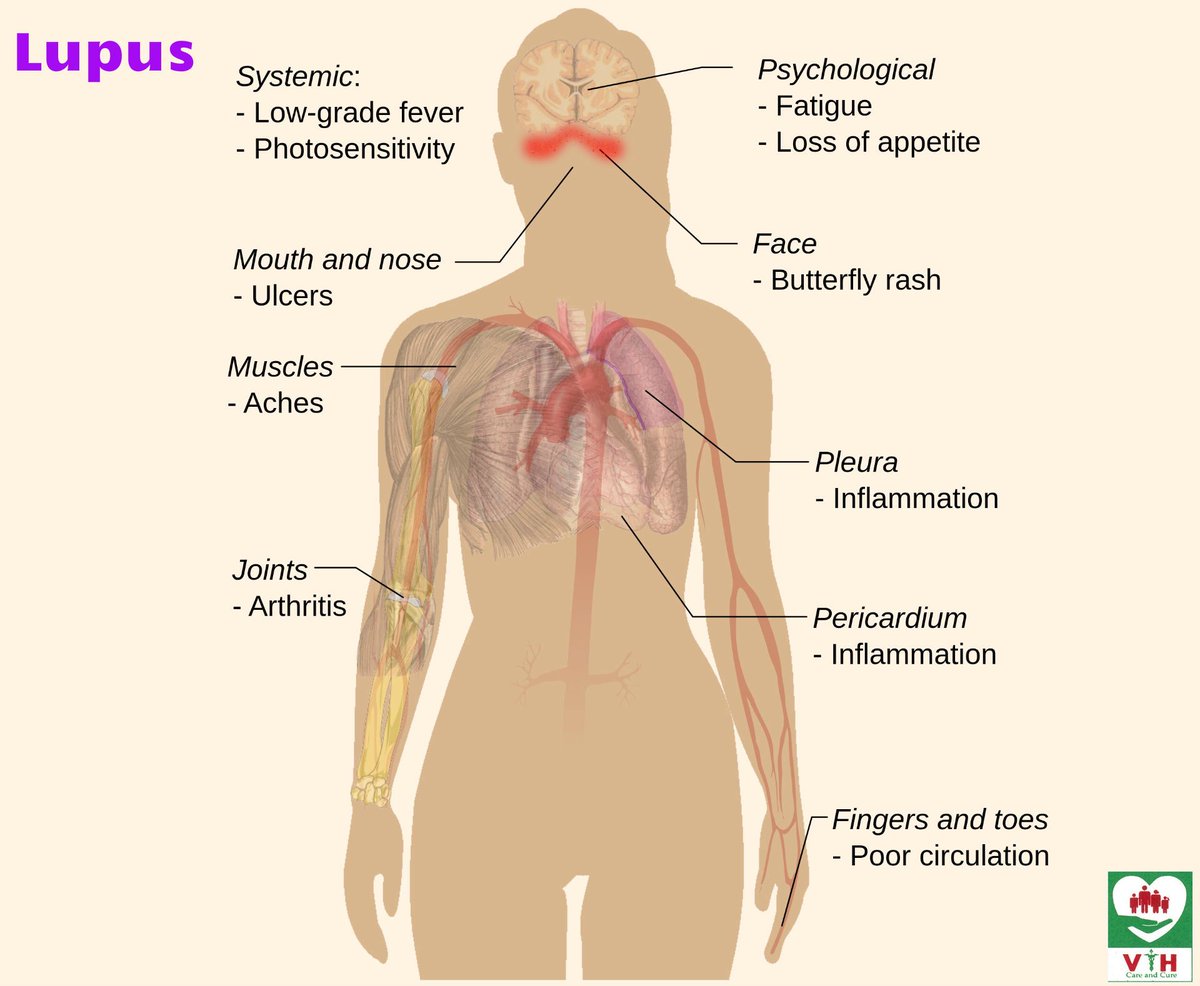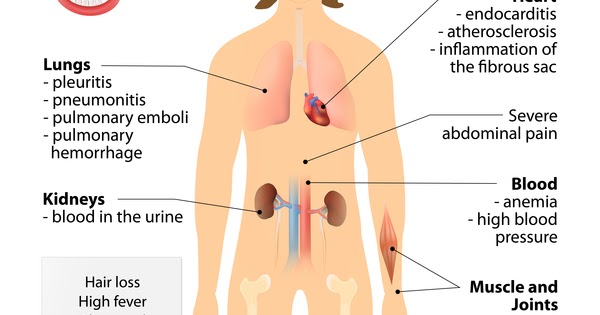Fever and Lupus: Understanding Fevers in Adult Lupus Patients
What are the causes of fever in adult lupus patients? How is fever associated with systemic lupus erythematosus (SLE) disease activity? Explore the mechanisms behind fever in lupus and the clinical manifestations.
Understanding Fever in Lupus Patients
Fever is a common manifestation of systemic lupus erythematosus (SLE), occurring in 36-86% of adult lupus patients. The variability in SLE disease manifestations is well recognized, with lupus activity ranging from mild to severe. Fever in lupus patients can be attributed to various factors, including lupus disease activity, infection, malignancy, or drug-related causes.
Mechanisms of Fever in Lupus
Normal body temperature is regulated by the thermoregulatory center in the anterior hypothalamus. Prostaglandin E2 (PGE2) is thought to be the proximal mediator of the febrile response, with elevated levels in the hypothalamus triggering an increase in the set point. This activates neurons in the vasomotor center, leading to vasoconstriction and increased heat production in the periphery.

Pyrogenic cytokines, such as interleukin-1β (IL-1β), tumor necrosis factor (TNF), interleukin-6 (IL-6), and interferons (IFN-α, IFN-β, IFN-γ), are produced by activated macrophages and monocytes, and act directly on the hypothalamus to induce fever. Interestingly, fever itself appears capable of countering the release of these pyrogenic cytokines, suggesting a feedback mechanism.
In lupus, patients often have enhanced serum levels of IFN-α, which correlate with anti-double stranded DNA (anti-dsDNA) production and disease activity. A close correlation between serum IFN-α (but not IL-1 or TNF-α) and fever has been observed in untreated SLE patients, suggesting the potential involvement of IFN-α in fever pathogenesis.
Clinical Manifestations of Fever in Lupus
Fever in active SLE without infection typically presents with a peak temperature ranging from 38°C to 40.6°C and an intermittent pattern. Fever may be the only presenting symptom of SLE, as seen in patients with fever of unknown origin (FUO), where up to 5% are eventually diagnosed with lupus.

The differential diagnosis for fevers in lupus is broad, including lupus disease activity, infection, malignancy, or drug-related causes. Distinguishing the cause of fever can be challenging, as the initial clinical presentation of a patient with lupus is very similar to the acute febrile phase of an infection.
Fever and Lupus Disease Activity
Fever is an important disease activity indicator in lupus and is taken into account in the Modified Systemic Lupus Erythematosus Disease Activity Index (M-SLEDAI). The reported prevalence of fever attributed to SLE has declined over time, potentially due to the frequent use of nonsteroidal anti-inflammatory drugs.
In a large Canadian study, fever was found to typically present early in the disease course of lupus and was more common in Caucasian patients. The attribution of fever to SLE, however, requires the exclusion of other possible causes, as the initial presentation can mimic an acute febrile infection.
Cytokines and Fever in Lupus
Various cytokines, such as IL-1, IL-6, IL-17, and interferons, are dysregulated in SLE and play a role in the fever pathogenesis. IL-1 initiates the recruitment of immune cells and inflammation, while increased IL-6 and IL-17 serum levels have been associated with elevated anti-DNA levels.
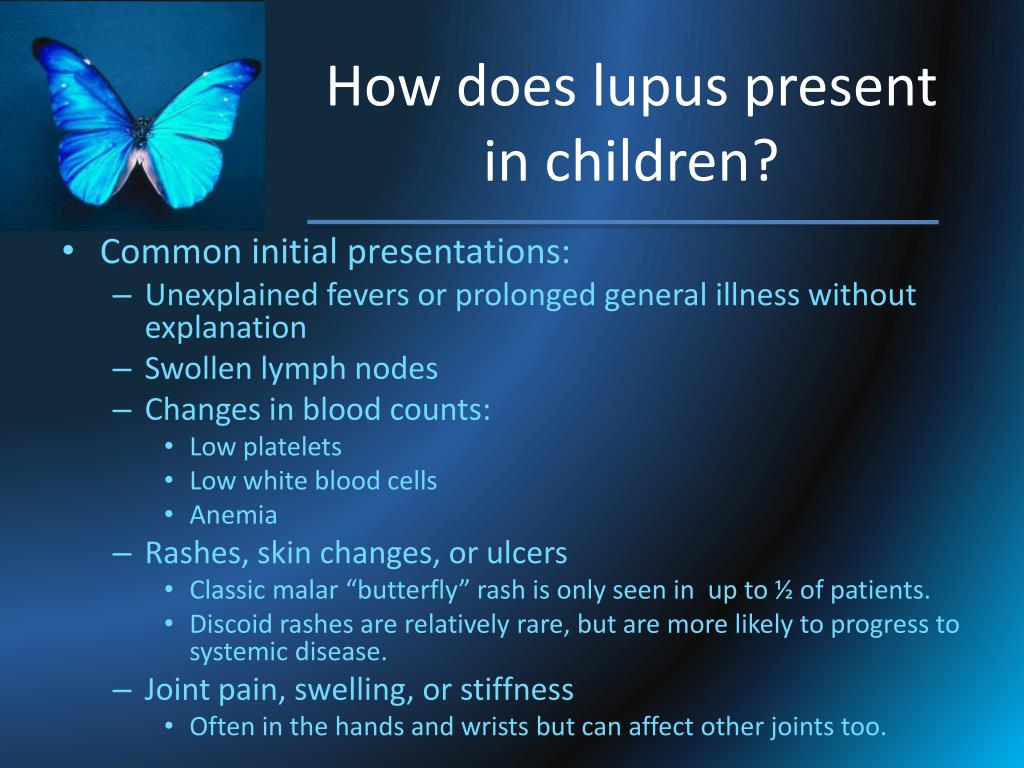
IFN-γ, as well as T-cell-derived cytokines like IL-21 and IL-2, are also dysregulated in SLE. IL-17 induces the secretion of proinflammatory proteins, creating a positive feedback loop that leads to further IL-17 production.
Fever Management in Lupus Patients
Proper management of fever in lupus patients requires a thorough assessment to determine the underlying cause, whether it is due to lupus disease activity, infection, malignancy, or drug-related factors. Appropriate treatment strategies, which may include antibiotic therapy, immunosuppressive medications, or adjustments to existing treatments, should be implemented to address the specific etiology of the fever.
Conclusion
Fever is a common and important manifestation of systemic lupus erythematosus, occurring in a significant proportion of adult lupus patients. Understanding the mechanisms underlying fever in lupus, the association with disease activity, and the differential diagnosis is crucial for the effective management of this challenging clinical presentation.

Fevers in Adult Lupus Patients
Cureus. 2018 Jan; 10(1): e2098.
Published online 2018 Jan 22. doi: 10.7759/cureus.2098
Monitoring Editor: Alexander Muacevic and John R Adler
,1,2,2,3,4,5 and 3
Author information Article notes Copyright and License information Disclaimer
Variability in systemic lupus erythematosus (SLE) disease manifestations is well recognized. Lupus disease activity can range from mild to severe. Fever is a common manifestation of SLE and occurs in 36%–86% of patients. In the Modified Systemic Lupus Erythematosus Disease Activity Index (M-SLEDAI), fever is taken into account as disease activity scoring. Assessment of lupus patients with fever is an important diagnostic challenge, since the initial clinical presentation of a patient with lupus is very similar to the acute febrile phase of an infection. The attribution of fever to SLE holds only after other causes are excluded.
Keywords: lupus, infection, malignancy, vasculitis, fever
Normal body temperature is controlled in the thermoregulatory center located in the anterior hypothalamus. Prostaglandin E2 (PGE2) is thought to be the proximal mediator of the febrile response. Elevated levels of intracellular PGE2 in the hypothalamus appear to be the trigger for raising the set point, which then activates neurons in the vasomotor center to commence vasoconstriction and slow the firing rate of warm-sensitive neurons to increase heat production in the periphery. Once the fever is reached, an increase or decrease in core body temperature will stimulate thermoregulatory mechanisms similar to those evoked at normal body temperature to maintain the elevated set point. Thermogenesis in either the fat or muscle takes place by uncoupling proteins, which release adenosine triphosphate (ATP) and heat. Shivering takes place when there is a rapid rise to match the new febrile set point. A morning oral temperature reading >37. 2 °C (98.9 °F) or an afternoon temperature >37.7 °C (99.9 °F) is considered a fever [1]. Rectal temperatures are generally 0.6 °C (1.0 °F) higher than oral readings. Fever of unknown origin (FUO) is defined as a temperature higher than 38.3 °C on several occasions and lasting longer than three weeks, with a diagnosis that remains uncertain after one week of investigation [2].
2 °C (98.9 °F) or an afternoon temperature >37.7 °C (99.9 °F) is considered a fever [1]. Rectal temperatures are generally 0.6 °C (1.0 °F) higher than oral readings. Fever of unknown origin (FUO) is defined as a temperature higher than 38.3 °C on several occasions and lasting longer than three weeks, with a diagnosis that remains uncertain after one week of investigation [2].
When the hypothalamic set point is reset downward, the processes of heat loss are accelerated through vasodilation and sweating [3, 4]. Pyrogenic cytokines, such as interleukin-1b (IL-1β), tumor necrosis factor (TNF), interleukin-6 (IL-6), interferon alpha (INF-α), interferon beta (INF-β), and interferon gamma (INF-γ) [5-7], are produced by activated macrophages/monocytes and act directly on the hypothalamus to produce a fever response.
Analogous to a biochemical feedback pathway, fever itself appears capable of countering the release of pyrogenic cytokines [4]. SLE patients often have enhanced IFN-α serum levels, and the IFN levels correlate with anti-double stranded DNA (anti-dsDNA) production and disease activity. Furthermore, a close correlation between serum concentrations of INF-α (but not IL-1 or tumor necrosis factor α) and fever was observed in 25 untreated patients with SLE, suggesting the possible involvement of INF-α in fever pathogenesis [5].
Furthermore, a close correlation between serum concentrations of INF-α (but not IL-1 or tumor necrosis factor α) and fever was observed in 25 untreated patients with SLE, suggesting the possible involvement of INF-α in fever pathogenesis [5].
IL-1 initiates the recruitment of immune cells and inflammation. Interleukin 1α (IL-1α) and interleukin 1β (IL-1β) are proinflammatory cytokines with widespread biological activities, regulated in part by the interleukin receptor antagonist (IL-1Ra). IL-1 is considered to play an important role in SLE pathogenesis and disease activity. Increased IL-6 and IL-17 serum levels in some studies correlate with elevated anti-DNA levels. Additionally, IFN-γ, as well as T-cell-derived cytokines like IL-21 and IL-2, is dysregulated in SLE. IL-17 induces secretion of many proinflammatory proteins, among them prostaglandin E2 (PGE2), granulocyte-macrophage colony-stimulating factor (GMCSF), granulocyte colony stimulating factor, and also cytokines which induce a positive feedback loop and lead to further IL-17 production like IL-6, IL-1β and IL-21.
Clinical manifestations
Fever is a common manifestation of SLE and can occur in 36–86% of patients [8-12]. The reported prevalence of fever attributed to SLE has declined progressively, perhaps resulting from frequent use of nonsteroidal anti-inflammatory drugs [8]. Rarely fever may be the only presenting symptom of SLE, as in patients with FUO. Among patients with FUO, up to 5% are eventually diagnosed with SLE [13]. In a large Canadian study, fever typically presented in lupus early in the disease course [14] and is more common in Caucasians. In patients with active SLE without infection, the peak temperature ranges from 38 °C to 40.6 °C with an intermittent pattern.
The differential for fevers in lupus is broad, and includes lupus disease activity, infection, malignancy or drug reactions. Serious infections are a major cause of morbidity among lupus patients and should be considered in all immunocompromised SLE patients with fever. Hence, fever can only be attributed to SLE after other causes are excluded. Rovin, et al. defined an SLE fever with three criteria: 1) absence of infection despite extensive testing, 2) presence of an illness typical of active SLE accompanying the fever, and 3) no evidence for infection despite escalation of immunosuppression [15]. In a retrospective analysis of 160 hospitalized patients with SLE, Stahl, et al. identified 83 febrile episodes in 63 patients [14]. Of these, 23% of the fevers were attributed to infections, 17% to miscellaneous causes, and 60% to lupus disease activity. Inoue, et al. also reported that SLE activity was the most common cause of fever [16].
Rovin, et al. defined an SLE fever with three criteria: 1) absence of infection despite extensive testing, 2) presence of an illness typical of active SLE accompanying the fever, and 3) no evidence for infection despite escalation of immunosuppression [15]. In a retrospective analysis of 160 hospitalized patients with SLE, Stahl, et al. identified 83 febrile episodes in 63 patients [14]. Of these, 23% of the fevers were attributed to infections, 17% to miscellaneous causes, and 60% to lupus disease activity. Inoue, et al. also reported that SLE activity was the most common cause of fever [16].
Compared to patients with SLE and fever of infectious etiology, those with fever due to lupus were more likely to have lower complement C3 and higher levels of disease activity [17]. In addition, fever in the setting of a low white blood cell (WBC) count is more consistent with lupus disease activity rather than infection. A new infection should be strongly suspected if the patient is already receiving moderate or high doses of glucocorticoids and if the fever persists despite other signs of lupus activity remitting [15]. Moreover, a poor response to nonsteroidal anti-inflammatory drugs (NSAIDs), acetaminophen, and low to moderate doses of glucocorticoids should raise suspicion for an infectious or drug-related etiology, since most fevers due to active SLE remit with use of these agents. In an SLE cohort of 22 patients, 11 had SLE fever that was readily suppressed with steroids, unlike the remaining patients with infectious fevers who did not respond well to anti-inflammatory agents [15]. Of note, 10 of these 11 patients with SLE fever had current (class IV) or past lupus nephritis.
Moreover, a poor response to nonsteroidal anti-inflammatory drugs (NSAIDs), acetaminophen, and low to moderate doses of glucocorticoids should raise suspicion for an infectious or drug-related etiology, since most fevers due to active SLE remit with use of these agents. In an SLE cohort of 22 patients, 11 had SLE fever that was readily suppressed with steroids, unlike the remaining patients with infectious fevers who did not respond well to anti-inflammatory agents [15]. Of note, 10 of these 11 patients with SLE fever had current (class IV) or past lupus nephritis.
Studies have demonstrated fatal sepsis when high doses of steroids are continued in the persistently febrile lupus patient.
Disease activity in lupus
Active lupus can cause fever. Due to the heterogeneity and the fluctuating nature of disease activity, the definition of remission in SLE still remains elusive. A number of SLE disease activity instruments, with overlapping strengths and weaknesses, are available for use. Biomarkers have been added to certain scales including the modified Systemic Lupus Erythematosus Disease Activity Index (M-SLEDAI), the British Isles Lupus Assessment Group index (BILAG-2004), the Systemic Lupus Activity Measure index (SLAM), the Systemic Lupus Activity Index (SLAI), the European Consensus Lupus Activity Measurement index (ECLAM), and the Systemic Lupus Activity Questionnaire (SLAQ) for population studies [18]. Barr, et al. described three major patterns of SLE disease activity over time, as defined by the Physician Global Assessment (PGA) and the modified SLE Disease Activity Index (M-SLEDAI) [19]. The predisposition for flare or remission in the initial years of disease is predictive of long-term outcome, with those achieving remission earlier having a more favorable disease course [20-22]. Stahl, et al. reported that 60% of fevers in lupus were attributable to active SLE [14].
Biomarkers have been added to certain scales including the modified Systemic Lupus Erythematosus Disease Activity Index (M-SLEDAI), the British Isles Lupus Assessment Group index (BILAG-2004), the Systemic Lupus Activity Measure index (SLAM), the Systemic Lupus Activity Index (SLAI), the European Consensus Lupus Activity Measurement index (ECLAM), and the Systemic Lupus Activity Questionnaire (SLAQ) for population studies [18]. Barr, et al. described three major patterns of SLE disease activity over time, as defined by the Physician Global Assessment (PGA) and the modified SLE Disease Activity Index (M-SLEDAI) [19]. The predisposition for flare or remission in the initial years of disease is predictive of long-term outcome, with those achieving remission earlier having a more favorable disease course [20-22]. Stahl, et al. reported that 60% of fevers in lupus were attributable to active SLE [14].
Laboratory findings
Most infectious complications in SLE are bacterial, including respiratory, urinary and soft tissue infections [17,18]. Given the high prevalence of infection in immunocompromised lupus patients, a predictive biomarker that can distinguish infectious fevers from SLE fevers is essential. Present biomarkers have poor specificity and sensitivity for this purpose, but can provide some useful information to help with the clinical assessment for the patient.
Given the high prevalence of infection in immunocompromised lupus patients, a predictive biomarker that can distinguish infectious fevers from SLE fevers is essential. Present biomarkers have poor specificity and sensitivity for this purpose, but can provide some useful information to help with the clinical assessment for the patient.
Commonly used markers in SLE include anti-dsDNA antibodies, complement (C3 and C4), Erythrocyte sedimentation rate (ESR), C-reactive protein (CRP), anti-C1q antibodies, and activity on urinary sediment. Findings that favor the diagnosis of SLE fever over infection include leukopenia (not explained by cytotoxic therapy), normal or slightly elevated CRP, low C3 and C4, and elevated anti-dsDNA [15]. More specific biomarkers for lupus disease activity are currently being evaluated but are not yet available in clinical practice.
The acute phase response accompanies both acute and chronic inflammatory states and is associated with a wide variety of disorders, including infection, trauma, infarction, systemic autoimmune and inflammatory diseases, and various neoplasms. CRP has both proinflammatory and anti-inflammatory actions [23]. CRP is synthesized by the liver during IL-6 regulation. A major function of CRP is its ability to bind phosphocholine, thereby permitting recognition both of foreign pathogens that display this moiety and phospholipid constituents of damaged cells [24]. CRP can also activate the complement system and bind to phagocytic cells via Fc receptors, suggesting that it can initiate elimination of pathogens and targeted cells by interaction with both humoral and cellular effector systems of inflammation.
CRP has both proinflammatory and anti-inflammatory actions [23]. CRP is synthesized by the liver during IL-6 regulation. A major function of CRP is its ability to bind phosphocholine, thereby permitting recognition both of foreign pathogens that display this moiety and phospholipid constituents of damaged cells [24]. CRP can also activate the complement system and bind to phagocytic cells via Fc receptors, suggesting that it can initiate elimination of pathogens and targeted cells by interaction with both humoral and cellular effector systems of inflammation.
CRP increases significantly in SLE patients with concomitant infection, but increases only slightly or not at all in patients with a lupus flare. This has been attributed to the presence of CRP autoantibodies [25], genetic differences in the ability to respond to certain stimuli [26], and reduced production or defects in the action of IL-6 [27]. Furthermore, IFN-α is an inhibitor of CRP promoter activity and CRP secretion [28]. High-sensitivity CRP (hsCRP) is a more sensitive test that can detect very low levels of CRP. HsCRP with values above 6 mg/dl may be associated with active infection with an 84% specificity in SLE patients [29].
High-sensitivity CRP (hsCRP) is a more sensitive test that can detect very low levels of CRP. HsCRP with values above 6 mg/dl may be associated with active infection with an 84% specificity in SLE patients [29].
The ESR, an indirect acute phase reactant, reflects plasma viscosity and the presence of acute phase proteins, especially fibrinogen. ESR elevation is common in SLE and is often measured as a potential indicator of disease activity. A wide range of factors can influence ESR levels, many of them unrelated to inflammation, such as older age, female gender, anemia, renal disease and technical factors with the assay. Hypoalbuminemia, hypercholesterolemia, hypergammaglobulinemia, and malignancy may also increase ESR. Due to IL-6 secretion by adipose tissue, both ESR and CRP can be elevated in obesity [30].
The ESR is not a variable in the SLE Disease Activity Index (SLEDAI) or the British Isles Lupus Activity Group (BILAG) activity measures, but was included in the Systemic Lupus Activity Measure (SLAM). The ESR/CRP ratio may be useful to differentiate between infection and flare in SLE patients, where a ratio above 15 was significantly correlated with disease activity and a ratio below two was associated with infection [29].
The ESR/CRP ratio may be useful to differentiate between infection and flare in SLE patients, where a ratio above 15 was significantly correlated with disease activity and a ratio below two was associated with infection [29].
Other causes of fever in lupus
In addition to infection or lupus disease activity, fever may indicate the presence of another concurrent illness, such as sarcoidosis [31], vasculitis [32-35], autoinflammatory disorders [36], rheumatic fever [37], malignancy or drug reaction. Several studies have examined malignancy risk among SLE patients. Mellemkjaer, et al. reported an increased risk of overall malignancy compared with the general population in 1575 SLE patients [38]. This was largely driven by an increased risk for hematological malignancies, particularly non-Hodgkin’s lymphoma (NHL). Smedby, et al. found the adjusted odds ratio (OR) for NHL among SLE patients was 4.6 (95% CI: 1.0, 22) [39]. SLE is also a risk factor for cervical neoplasia, and in particular, for premalignant cervical lesions. Malignant disorders can often be differentiated from lupus by their hematological profile, but sometimes bone marrow and/or lymph node biopsy may be needed to confirm the diagnosis. Cancer risk in lupus is associated with a higher cumulative cyclophosphamide dose (OR: 1.09) and lower hydroxychloroquine dose (OR: 0.93).
Malignant disorders can often be differentiated from lupus by their hematological profile, but sometimes bone marrow and/or lymph node biopsy may be needed to confirm the diagnosis. Cancer risk in lupus is associated with a higher cumulative cyclophosphamide dose (OR: 1.09) and lower hydroxychloroquine dose (OR: 0.93).
Vasculitis is also a cause of fever in lupus, and most studies analyzing the prevalence of vasculitis in large series of SLE patients showed a prevalence ranging from 11 to 36%. This vascular inflammatory process may take many clinical forms depending on the size of the affected vessels (arteries, veins, and/or capillaries) and the sites involved (skin or internal organs), with a prognosis that may range from mild to life-threatening [32-35].
Recurrent fevers in lupus are common and the differential is very broad. Infection should always be considered first and ruled out. If no other clear etiology can be identified, then lupus-associated fevers should be considered.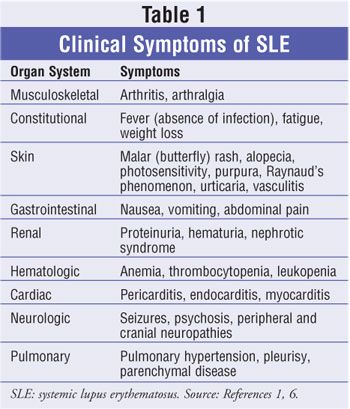
The content published in Cureus is the result of clinical experience and/or research by independent individuals or organizations. Cureus is not responsible for the scientific accuracy or reliability of data or conclusions published herein. All content published within Cureus is intended only for educational, research and reference purposes. Additionally, articles published within Cureus should not be deemed a suitable substitute for the advice of a qualified health care professional. Do not disregard or avoid professional medical advice due to content published within Cureus.
The authors have declared that no competing interests exist.
1. A critical appraisal of 98.6 degrees F, the upper limit of the normal body temperature, and other legacies of Carl Reinhold August Wunderlich. Mackowiak P, Wasserman S, Levine M. JAMA. 1992;268:1578–1580. [PubMed] [Google Scholar]
2. Fever of unknown origin: an old friend revisited. Petersdorf R. Arch Intern Med. 1992;152:21–22.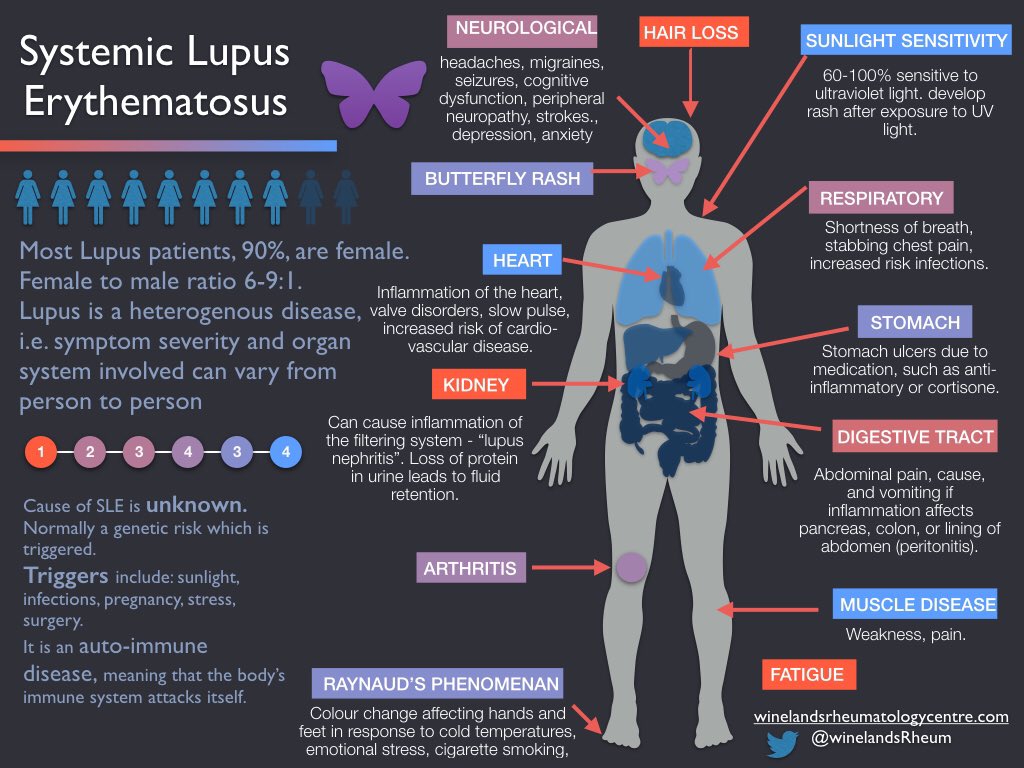 [PubMed] [Google Scholar]
[PubMed] [Google Scholar]
3. Antipyretics: mechanisms of action and clinical use in fever suppression. Aronoff D, Neilson E. Am J Med. 2001;111:304–315. [PubMed] [Google Scholar]
4. Role of the preoptic-anterior hypothalamus in thermoregulation and fever. Boulant J. Clin Infect Dis. 2000;31:0. [PubMed] [Google Scholar]
5. Possible involvement of interferon alfa in the pathogenesis of fever in systemic lupus erythematosus. Kanayama Y, Kim T, Inariba H, et al. Ann Rheum Dis. 1989;48:861–863. [PMC free article] [PubMed] [Google Scholar]
6. The neurologic basis of fever. Saper C, Breder C. N Engl J Med. 1994; 330:1880–1886. [PubMed] [Google Scholar]
7. Concepts of fever. Mackowiak P. Ann Intern Med. 1998;158:1870–1881. [PubMed] [Google Scholar]
8. Ryu S, Fu W, Petri M. Lupus Sci Med. Vol. 4. Philadelphia: 2017. Associates and predictors of pleurisy or pericarditis in SLE; p. 221. [PMC free article] [PubMed] [Google Scholar]
9. Font J, Cervera R, Ramos-Casals M, et al. Semin Arthritis Rheum. Vol. 33. Ingelmo M; 2004. Clusters of clinical and immunologic features in systemic lupus erythematosus: analysis of 600 patients from a single center; pp. 217–230. [PubMed] [Google Scholar]
Semin Arthritis Rheum. Vol. 33. Ingelmo M; 2004. Clusters of clinical and immunologic features in systemic lupus erythematosus: analysis of 600 patients from a single center; pp. 217–230. [PubMed] [Google Scholar]
10. Differences in disease phenotype and severity in SLE across age groups. Ambrose N, Morgan T, Galloway J, et al. Lupus. 2016;25:1542–1550. [PMC free article] [PubMed] [Google Scholar]
11. Systemic lupus erythematosus: clinical features in patients with a disease duration of over 10 years, first evaluation. Swaak A, Brink H, Smeenk R, et al. Rheumatology. 1999;38:953–958. [PubMed] [Google Scholar]
12. Systemic lupus erythematosus: review of the literature and clinical analysis of 138 cases. Harvey A, Shulman L, Tumulty P, et al. J Allergy. 1956;27:102. [Google Scholar]
13. Lunchenkov N, Filippov E, Prihodko O, et al. Open Forum Infect Dis. Vol. 4. Elsevier Science & Technology Books; 2017. Classical fever of unknown origin: retrospective study in infectious clinical hospital; p. 0. [Google Scholar]
0. [Google Scholar]
14. Fever in systemic lupus erythematosus. Stahl N, Klippel J, Decker J, et al. Am J Med. 1979;67:935–940. [PubMed] [Google Scholar]
15. Clinical significance of fever in the systemic lupus erythematosus patient receiving steroid therapy. Rovin B, Tang Y, Sun J, et al. Kidney Int. 2005;68:747–759. [PubMed] [Google Scholar]
16. Differential diagnosis of fever in systemic lupus erythematosus using discriminant analysis. Inoue T, Takeda T, Koda S, et al. Rheumatol Int. 1986;6:69–77. [PubMed] [Google Scholar]
17. The causes and clinical significance of fever in systemic lupus erythematosus: a retrospective study of 487 hospitalised patients. Zhou W, Yang C. Lupus. 2009;18:807–812. [PubMed] [Google Scholar]
18. Distinguishing infections vs flares in patients with systemic lupus erythematosus. Ospina F, Echeverri A, Zambrano D, et al. Rheumatology. 2016;56:0. [PubMed] [Google Scholar]
19. Patterns of disease activity in systemic lupus erythematosus.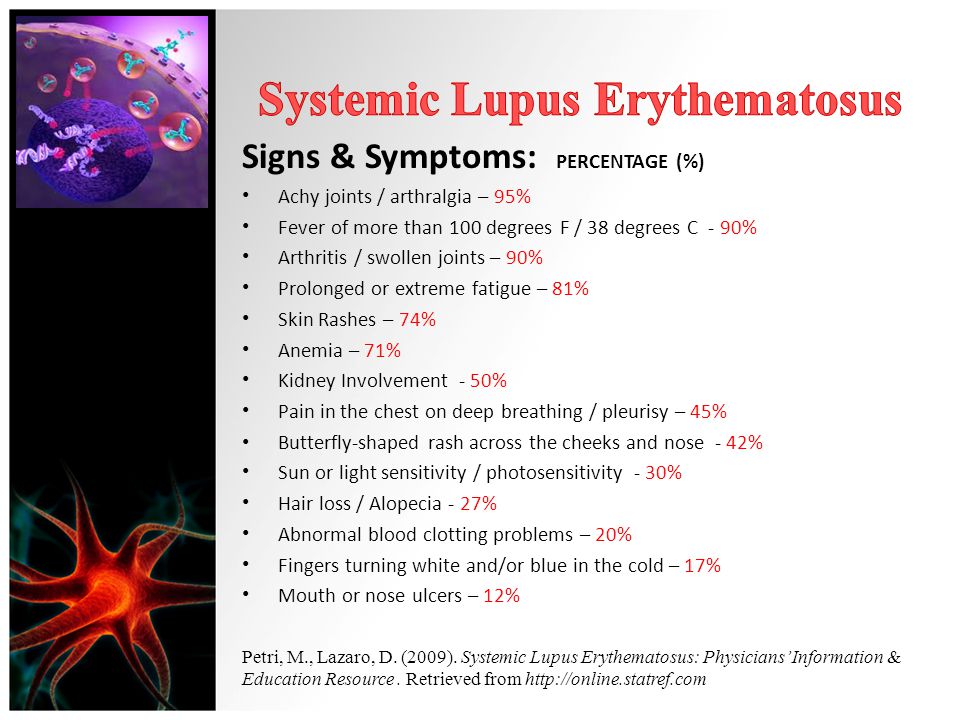 Barr SG, Zonana-Nacach A, Magder L, et al. Arthritis Rheum. 1999;42:2682–2688. [PubMed] [Google Scholar]
Barr SG, Zonana-Nacach A, Magder L, et al. Arthritis Rheum. 1999;42:2682–2688. [PubMed] [Google Scholar]
20. Prognostic parameters for flare in systemic lupus erythematosus. Mirzayan M, Schmidt R, Witte T, et al. Rheumatology. 2000;39:1316–1319. [PubMed] [Google Scholar]
21. Remission of systematic lupus erythematosus. Drenkard C, Villa AR, Garcia P, et al. Medicine. 1996;75:88–98. [PubMed] [Google Scholar]
22. Prolonged clinical remission in patients with systemic lupus erythematosus. Steiman AJ, Urowitz MB, Ibañez D, et al. J Rheumatol. 2014;41:1808–1816. [PubMed] [Google Scholar]
23. Human C-reactive protein: expression, structure, and function. Volanakis J. Mol Immunol. 2001;38:189–197. [PubMed] [Google Scholar]
24. Varied biologic functions of c-reactive protein. Szalai A, McCrory M. Immunol Res. 2002;26:279–287. [PubMed] [Google Scholar]
25. Prognostic value of anti-CRP antibodies in lupus nephritis in long-term follow-up. Pesickova S, Rysava R, Lenicek M, et al. Arthritis Res Ther. 2015;17:371. [PMC free article] [PubMed] [Google Scholar]
Arthritis Res Ther. 2015;17:371. [PMC free article] [PubMed] [Google Scholar]
26. Value of serum C-reactive protein measurement in the investigation of fever in systemic lupus erythematosus. Becker G, Waldburger M, Hughes G, et al. Ann Rheum Dis. 1980;39:50–52. [PMC free article] [PubMed] [Google Scholar]
27. Interleukin-6 (IL-6) and acute phase proteins in the disease course of patients with systemic lupus erythematosus. Swaak A, van Rooyen A, Aarden L, et al. Rheumatol Int. 1989;8:263–268. [PubMed] [Google Scholar]
28. Interferon-alpha mediates suppression of C-reactive protein: explanation for muted C-reactive protein response in lupus flares? Enocsson H, Sjöwall C, Skogh T, et al. Arthritis Rheum. 2009;60:3755–3760. [PubMed] [Google Scholar]
29. High-sensitivity C-reactive protein and erythrocyte sedimentation rate in systemic lupus erythematosus. Firooz N, Albert D, Wallace D, et al. Lupus. 2011;20:588–597. [PubMed] [Google Scholar]
30. Obesity and the erythrocyte sedimentation rate in children./005.jpg) Kasapçopur O, Ozdoan H, Yazic H. J Pediatr. 1991;119:773–775. [PubMed] [Google Scholar]
Kasapçopur O, Ozdoan H, Yazic H. J Pediatr. 1991;119:773–775. [PubMed] [Google Scholar]
31. Co-existing sarcoidosis, systemic lupus erythematosus and the antiphospholipid antibody syndrome: case reports and discussion from the Brigham and Women’s Hospital Lupus Center. Wesemann D, Costenbader K, Coblyn J. Lupus. 2009;18:202–205. [PubMed] [Google Scholar]
32. Giant cell arteritis and systemic lupus erythematosus. Bunker C, Dowd P. Br J Dermatol. 1988;119:115–120. [PubMed] [Google Scholar]
33. Vasculitis in systemic lupus erythematosus. Barile-Fabris L, Hernández-Cabrera H, Barragan-Garfias J. Curr Rheumatol Rep. 2014;16:440. [PubMed] [Google Scholar]
34. Vasculitis in systemic lupus erythematosus. Drenkard C, Villa A, Reyes E, et al. Lupus. 1997;6:235–242. [PubMed] [Google Scholar]
35. Vasculitis in systemic lupus erythematosus: prevalence and clinical characteristics in 670 patients. Ramos-Casals M, Nardi N, Lagrutta M, et al. Medicine. 2006;85:95–104. [PubMed] [Google Scholar]
36. Overlap syndrome between familial Mediterranean fever and tumor necrosis factor receptor-associated periodic syndrome in a Lupus patient. Nonaka F, Migita K, Iwasaki K, et al. Tohoku J Exp Med. 2014;233:73–77. [PubMed] [Google Scholar]
Overlap syndrome between familial Mediterranean fever and tumor necrosis factor receptor-associated periodic syndrome in a Lupus patient. Nonaka F, Migita K, Iwasaki K, et al. Tohoku J Exp Med. 2014;233:73–77. [PubMed] [Google Scholar]
37. Disseminated lupus erythematosus with sydenham’s chorea and rheumatic heart disease: report of a case with autopsy(disseminated lupus erythematosus with sydenham’s chorea and rheumatic heart disease: report of a case with autopsy) Bauer F, Riley C, Cohen E. Ann Intern Med. 1950;33:1042–1053. [PubMed] [Google Scholar]
38. Non-Hodgkin’s lymphoma and other cancers among a cohort of patients with systemic lupus erythematosus. Mellemkjaer L, Anderson V, Linet MS, et al. Arthritis Rheum. 1997;40:761–768. [PubMed] [Google Scholar]
39. Autoimmune and chronic inflammatory disorders and risk of non-Hodgkin lymphoma by subtype. Smedby K, Hjalgrim H, Askling J, et al. J Natl Cancer Inst. 2006;98:51–60. [PubMed] [Google Scholar]
Fevers and Lupus – LupusCorner
Fevers are a common symptom of lupus flares but can also be a symptom of infections.

Systemic lupus erythematosus (SLE) has many different symptoms. This is because Inflammation effects all of the parts of the body, from the joints, to the nervous system, to metabolism, leading to weight gain, pain, fatigue, and many other problems. One of the most common symptoms of SLE-related inflammation is fever, occurring in 35-86% of patients. In fact, lupus-related fevers are often one of the first symptoms of lupus. When it occurs alongside joint pain and malar rash, however, it forms the “classic triad” and may encourage further testing and diagnosis of SLE or other autoimmune diseases.
What is a Fever?
The body has many methods to fight off infection, and fevers are one of them. In response to inflammation, such as to a bacteria or virus, the body signals the hypothalamus, the organ that regulates many bodily functions, to heat up and try to ‘cook’ them out. This works because humans can survive heating up a range of temperatures above the normal 98. 5 degrees for a short time with some discomfort. Many bacteria, viruses, and parasites cannot survive this overheating.
5 degrees for a short time with some discomfort. Many bacteria, viruses, and parasites cannot survive this overheating.
However, lupus is an autoimmune disease, and it can trigger inflammation responses, including recurring low-grade fevers, which are below 101 degrees. Flares can last from 2-6 days, can even linger for weeks, and this correlates to the fever symptom. They are not life threatening, but they are exhausting and, often, include headaches and can last for weeks at a time.
Other illnesses that are likely to occur alongside lupus, such as sarcoidosis, vasculitis, other autoinflammatory disorders, and rheumatism can trigger fevers. Some medications also might have low-grade fever as a potential side effect.
Low-grade fevers have the following symptoms:
- Warm, flushed skin
- Chills or shivering
- Sweating
- Muscle Aches
- Headaches
- Difficulty focusing
Sometimes, people with lupus have trouble regulating their body temperature in hot weather, experiencing symptoms like hot flashes, and sweats. In some cases, the thyroid, an important organ involved in metabolism regulation, can be effected by lupus and lead to overheating, as well as fatigue, muscle weakness, hair loss, or dryness of the eyes and mouth. The onset of menopause can also cause hot flashes, which is significant because many people with lupus are women. These are, however, different from lupus-related fevers.
In some cases, the thyroid, an important organ involved in metabolism regulation, can be effected by lupus and lead to overheating, as well as fatigue, muscle weakness, hair loss, or dryness of the eyes and mouth. The onset of menopause can also cause hot flashes, which is significant because many people with lupus are women. These are, however, different from lupus-related fevers.
There are also lupus headaches and migraines that are not related to fevers, and feel different from febrile (fever-related) headaches.
Diagnosing with Lupus Fevers
A “fever of unknown origin” is a catch-all term for low-grade fevers that do not have a known cause and last for a significant amount of time. Lupus fevers are often not diagnosed for a while because doctors try to rule out other causes first, even if the person is known to have lupus. This is because people with lupus are more vulnerable to infections that trigger fevers due to their lupus and immunosuppressive medications. and it is important to catch these as soon as possible, even though 60% of these fevers are likely to be lupus related. You can read more about infections and lupus, here.
You can read more about infections and lupus, here.
The intensity of lupus-related fevers, and the flare triggers that cause them, can vary widely from person to person, which also make it difficult to diagnose fever symptoms quickly.
Treating Lupus Fevers
For the most part, lupus-related fevers should be treated like any other fever :
- Cold compresses or ice packs, to lower temperature
- Lots of water to avoid dehydration
- Rest, to overcome fatigue
- General self-care (eating right, sleeping right, and hygiene)
NSAIDs (naproxen, ibuprofen, acetaminorphin,) and steroid medications are very effective at controlling fevers and easing some of their uncomfortable symptoms. Antimalarial drugs , a common type of lupus medication, are also effective, as they reduce inflammation, which reduces fever. You can read more about lupus medications here.
In short, for the most part, fevers are unpleasant, but do not require too much special care and will go away on their own.

However, if the fever persists or gets into the higher temperature range (such as 101 degrees,) it is important to get a checkup to make sure it is not a potentially life-threatening infection. A doctor should be contacted at 104 degrees, if it is accompanied by a worsening cough, severe muscle pain, or feelings of disorientation.
Comments (0)
Featured
Lupus Symptoms
Retinal Vasculitis, Nerve Damage and Lupus
Anna Schoenbach
2 weeks ago
Over 28% of people with lupus have eye symptoms, an issue that is not…
Lupus Symptoms
Humidity and Lupus
Anna Schoenbach
1 month ago
Seasonal temperature changes add to the challenges of life with lupus. Humidity…
Lupus Symptoms
Lower Back Pain, Chronic Inflammation, & Lupus
Georg Armstrong
2 months ago
Many Lupus Warriors, particularly people with nephritis, struggle with constant aches & lower back.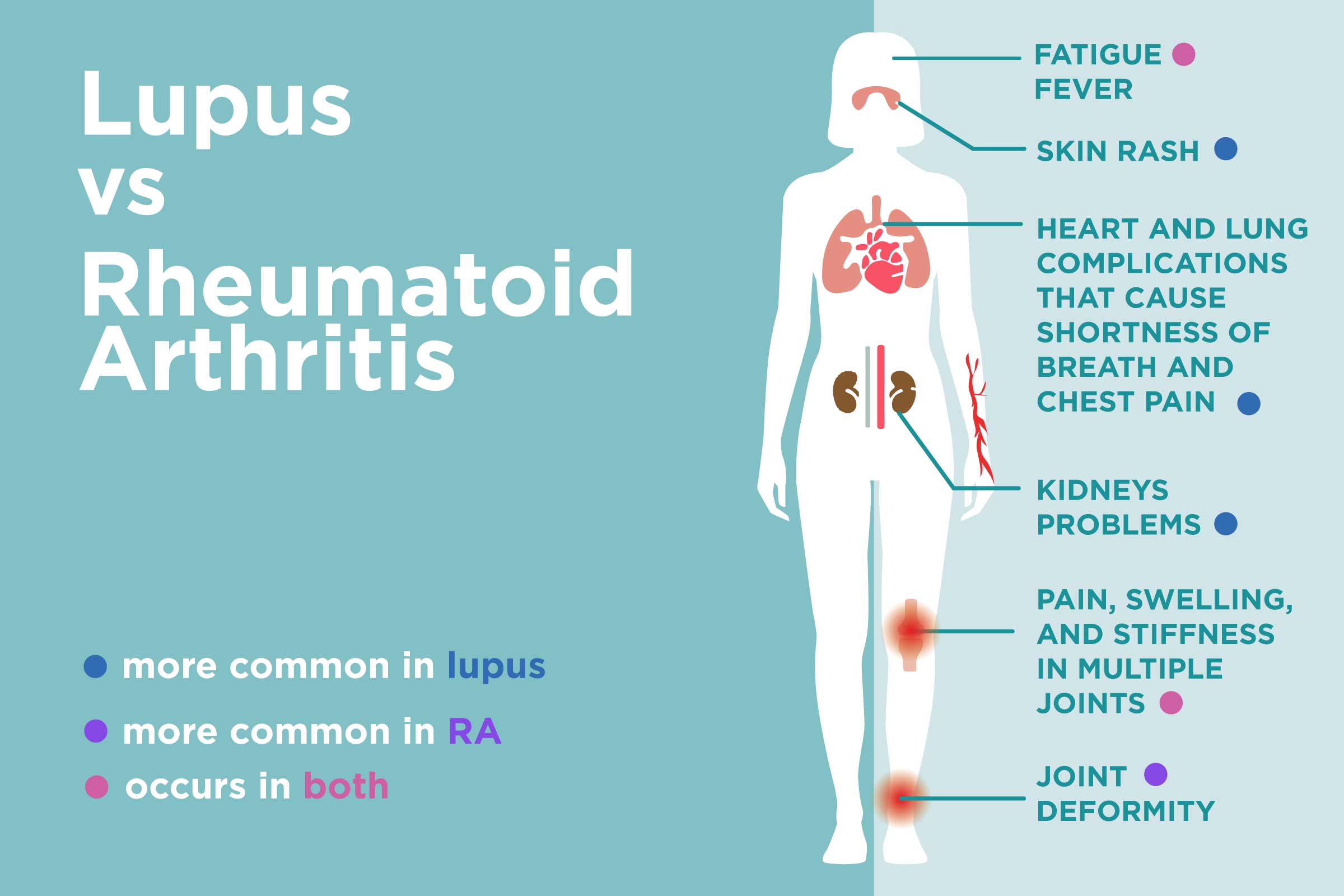 ..
..
causes, symptoms and treatment in Moscow at the FSCC FMBA
Systemic lupus erythematosus is an autoimmune disease that is accompanied by damage to organs and tissues against the background of systemic inflammation. The pathology is based on a violation of the processes of immune regulation. Lupus erythematosus has a chronic course with periods of remissions and exacerbations. The inflammation caused by lupus affects many organ systems, including the skin, heart, kidneys, joints, blood cells, the pleura that covers the lungs, and the brain.
The development of systemic lupus erythematosus is the result of a combination of genetics and environmental factors.
Women are diagnosed with lupus erythematosus ten times more often than men. This is associated with the influence of sex hormones on the immune response. Estrogen stimulates the production of antibodies in the body. The onset of the disease occurs at 15-25 years of age. Exacerbations occur during pregnancy and after childbirth.
Treatment of systemic lupus erythematosus is aimed at controlling symptoms, reducing the frequency of exacerbations, and preventing the development of complications. Therapy depends on which organs are affected as a result of systemic inflammation, and is aimed at improving the quality of life.
Symptoms
Lupus erythematosus is accompanied by a wide range of manifestations, since inflammation can develop in any organ. In most adult patients, the disease is mild. Symptoms can come and go and change over time.
General symptoms:
- Increased body temperature for a long time. Fever is caused by systemic inflammation;
- Fatigue, decreased performance, which persist even after a long rest;
- Weight change.
The most common signs and symptoms include:
- Muscle and joint pain. Pain syndrome may be accompanied by swelling, stiffness.
 Stiffness in the joints worries in the morning after waking up. The most common areas of muscle pain are the neck, hips, shoulders, and forearms;
Stiffness in the joints worries in the morning after waking up. The most common areas of muscle pain are the neck, hips, shoulders, and forearms; - Red rash which is provoked by being outdoors in sunny weather. A characteristic feature is a red rash on the cheeks with a transition to the nose, which resembles a butterfly in shape. The rash may be raised in the form of a disk;
- Sun sensitivity . Patients report worsening after exposure to the sun. Sunlight provokes the appearance of new skin rashes, joint pain, general weakness and fatigue, fever;
- Inspiratory chest pain . Against the background of lupus erythematosus, inflammation of the pleura develops, which covers the lungs;
- Hair loss . Hair thinning, patchy alopecia often accompany systemic lupus erythematosus;
- Signs of kidney damage . About half of patients with systemic lupus erythematosus report symptoms such as weight gain, swelling of the ankles, swelling around the eyes, high blood pressure, changes in the nature of urine;
- Ulcers in the mouth and nose .
 Ulcers usually appear on the cheeks, gums, palate, often painless;
Ulcers usually appear on the cheeks, gums, palate, often painless; - Neurological and psychiatric disorders . Patients experience headaches, dizziness, complain of decreased concentration and memory, convulsions.
Reasons
The reasons for the development remain unclear. Lupus erythematosus is a multifactorial pathology. It has been established that heredity, hormonal factors, environment, past infections play a role in the disruption of immune regulation processes.
Systemic lupus erythematosus is characterized by impaired immune response. At a certain point, the immune system begins to synthesize antibodies that damage its own healthy cells and tissues. As a result, immune compounds are formed that circulate in the body, and then are fixed in tissues and cause chronic inflammation.
Factors that increase the risk of developing lupus erythematosus:
- Heredity. Systemic lupus erythematosus and other systemic diseases in blood relatives increase the risk of developing pathology;
- Hormonal status.
 It has been established that lupus erythematosus develops more often in women. This is due to the influence of sex hormones on the immune response. 80% of patients with lupus erythematosus are women;
It has been established that lupus erythematosus develops more often in women. This is due to the influence of sex hormones on the immune response. 80% of patients with lupus erythematosus are women; - Environmental factors. Sunlight has been proven to stimulate changes in cell DNA that lead to autoimmune disorders in the body;
- Past infection. Numerous studies evaluate the role of infection. It has been established that patients with systemic lupus erythematosus have a higher titer of antibodies to the Epstein-Barr virus;
- Medicines. Certain blood pressure medications, anticonvulsants, and antibiotics can trigger the onset of the disease.
Diagnostics
A rheumatologist is an expert in the diagnosis and treatment of systemic autoimmune diseases. Rheumatologists diagnose systemic lupus erythematosus. The diagnosis is made on the basis of clinical and laboratory data.
The attending physician conducts a survey, examines the skin and mucous membranes, evaluates gait when walking and running, checks the amount of active and passive movements in the joint, examines the cardiovascular, respiratory, skeletal, and muscular systems.
Systemic lupus erythematosus has many of the same symptoms as other diseases such as arthritis and diabetes. To make a correct diagnosis, they are guided by the presence in patients of signs-criteria established by the board of rheumatologists, as well as the results of laboratory diagnostics:
- Red rash on cheekbones in the shape of a butterfly;
- Red raised disc-shaped rash;
- Red rashes that appear after exposure to the sun;
- Persistent mouth ulcers;
- Soreness and swelling of at least two joints that persist for several weeks;
- Chest pain when breathing, which may be a sign of inflammation of the pleura or pericardium. The pleura is the membrane that covers the lungs, and the pericardium is the outer shell of the heart;
- Kidney dysfunction. Urinalysis – blood and / or protein in the urine;
- According to the results of a blood test, the values of hemoglobin, erythrocytes and/or leukocytes, platelets are reduced;
- Detection of immunological changes in blood
- Mental disorders.

If systemic lupus erythematosus is suspected, the doctor will order tests to confirm the diagnosis:
- Antinuclear antibodies. The test has the greatest diagnostic value. A high titer confirms the diagnosis;
- Antiphospholipid antibodies, antibodies to double-stranded DNA, and antibodies to Sm core antigen. They are highly specific and may be required as an additional diagnostic. In addition, antiphospholipid antibodies indicate a high risk of complications such as miscarriage or blood clots;
Instrumental diagnostics:
- Computed tomography of the chest. The image may show signs of inflammation in the lungs, pulmonary thromboembolism, hemorrhage;
- Echocardiogram (ultrasound of the heart). With the help of ultrasound, the attending physician can confirm inflammation of the membrane surrounding the heart (pericarditis), evaluate pulmonary hypertension;
- Biopsy.
 An increase in the level of blood creatinine, protein in the urine are signs of lupus kidney damage. Doctors take a sample of kidney tissue to prescribe treatment based on the type of damage;
An increase in the level of blood creatinine, protein in the urine are signs of lupus kidney damage. Doctors take a sample of kidney tissue to prescribe treatment based on the type of damage; - MRI of the brain is performed to assess the white matter of the CNS, vascular inflammation, and also if a stroke is suspected.
It is important to remember that the diagnosis of Systemic Lupus Erythematosus is not established based on the results of blood tests, but only in the presence of appropriate clinical manifestations and after examination by a rheumatologist.
Treatment at the FSCC
Treatment of systemic lupus erythematosus depends on the manifestations and activity of inflammation.
Conservative therapy includes drugs:
- Non-steroidal anti-inflammatory drugs (NSAIDs ). Pain, swelling, fever are well controlled by NSAIDs
- Glucocorticoids . Prednisolone has a high anti-inflammatory effect, it is prescribed to all patients with lupus erythematosus.
 The dose is determined by the activity of inflammation. The risk of side effects increases with higher doses and longer therapy;
The dose is determined by the activity of inflammation. The risk of side effects increases with higher doses and longer therapy; - Cytostatic preparations . Prescribed for damage to internal organs.
- Pulse therapy with glucocorticoids . Indicated for high activity of the inflammatory process, kidney damage, in order to reduce the activity of the process and reduce the dose of tablet preparations.
- Aminoquinoline preparations . They have anti-inflammatory and immunosuppressive properties. In combination with glucocorticoids, it is prescribed to maintain remission and prevent exacerbations. Hydroxychloroquine plays a central role in the long-term management of all patients with systemic lupus erythematosus;
- Biologicals . Given intravenously, are prescribed if other methods have not been successful. Therapy with biological preparations is carried out in a specialized medical organization with the possibility of round-the-clock monitoring of the patient.

Complications
Exacerbation of lupus provokes the development of atherosclerosis – blockage of the arteries. Atherosclerosis increases the risk of heart attack, stroke, and heart failure.
For this reason, patients diagnosed with systemic lupus erythematosus are advised to pay attention to physical fitness, stop smoking, drinking alcohol, and regularly undergo a medical examination with cholesterol and blood pressure control.
Kidney damage is one of the most serious manifestations of lupus. Lack of control and insufficient drug compensation for lupus erythematosus can lead to kidney failure and dialysis.
You can prevent serious kidney disease with a timely visit to the doctor, especially at the first signs of kidney pathology:
- Edema of the lower limbs and hands;
- Puffiness around the eyes;
- Changing the mode of urination (reduction or increase in the frequency of urination), the nature of urine (change in color, amount of urine).

Prophylaxis
Primary prevention of lupus erythematosus has not been developed, since the nature of the disease has not been definitively established. Early diagnosis, as well as avoidance of precipitating factors such as prolonged sun exposure, can reduce symptoms and control the disease.
Patients with lupus erythematosus are recommended to learn as much as possible about their condition from a doctor in order to understand the development mechanism, treatment prognosis, and have an idea of possible manifestations. It is necessary to take all medicines strictly in accordance with the prescriptions, as well as regularly visit the attending physician to monitor the condition and evaluate the effectiveness of treatment.
Recommendations also include maintaining an active lifestyle, playing sports. Patients are not recommended to stay outside for a long time in sunny weather. Before going outside, apply sunscreen to exposed areas of the body, as well as wear clothing that will prevent the skin from getting the best of the sun (wide-brimmed hat, long-sleeved shirt).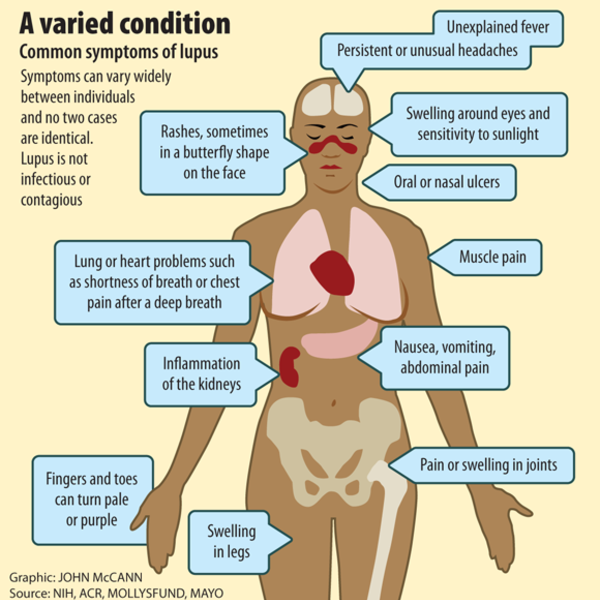
References
- Alekseeva E. I., Dvoryakovskaya T. M., Nikishina I. P., Denisova R. V., Podchernyaeva N. S., Sukhorukikh O. A., Shubina L. S. Systemic lupus erythematosus : clinical recommendations. – 2018
- Clinical guidelines “Diagnosis and treatment of systemic lupus erythematosus.” Developed by: Association of Rheumatologists of Russia. – 2020.
This article is an informational material and is not intended for self-diagnosis and self-treatment. If signs of discomfort appear, you should contact your doctor.
Systemic lupus erythematosus – health articles
11/10/2022
Systemic lupus erythematosus (SLE) is a disease in which inflammatory responses develop in various organs and tissues due to impaired functioning of the immune system.
The disease proceeds with periods of exacerbation and remission, the occurrence of which is difficult to predict. In the end, systemic lupus erythematosus leads to the formation of insufficiency of one or another organ, or several organs.
In SLE, the body’s immune system does not work as it should. A healthy immune system produces antibodies, which are specific proteins—proteins that help fight and destroy viruses, bacteria, and other foreign substances that invade the body. In lupus, the immune system produces antibodies (proteins) against healthy cells and tissues in the body. These antibodies, called autoantibodies (“auto” means one’s own), cause inflammation in various parts of the body, causing them to swell, red, fever, and pain.
Women suffer from systemic lupus erythematosus 10 times more often than men. The disease is most common at the age of 15-25 years. Most often, the disease manifests itself during puberty, during pregnancy and in the postpartum period.
Causes
Systemic lupus erythematosus is a complex disease with no known cause. It is likely that this is not a single cause, but rather a combination of several factors, including genetic, environmental and possibly hormonal factors, the combination of which can cause the disease. The exact cause of the disease may differ from person to person, stress, a cold, and hormonal changes in the body that occur during puberty, pregnancy, after an abortion, and during menopause can be a provoking factor.
The exact cause of the disease may differ from person to person, stress, a cold, and hormonal changes in the body that occur during puberty, pregnancy, after an abortion, and during menopause can be a provoking factor.
Researchers believe that genetics play an important role in the development of the disease, but the specific “lupus gene” has not yet been identified.
The fact that lupus can run in families shows that the development of the disease has a genetic basis. But genes alone cannot explain the occurrence of lupus. Other factors must also play a role. Among those that continue to be intensively studied are solar radiation, stress, certain drugs, and infectious agents such as viruses.
Symptoms
General symptoms of SLE:
- Joint tenderness and swelling, muscle pain
- Unexplained fever
- Chronic fatigue syndrome
- Red eruption on the face or discoloration of the skin
- Pain in the chest with deep breathing
- Increased hair loss
- Whitening or blueness of the skin of the fingers or toes in the cold or under stress (Raynaud’s syndrome)
- Increased sensitivity to the sun
- Swelling (swelling) of the legs and/or around the eyes
- Enlargement of lymph nodes
Other symptoms of lupus include chest pain, hair loss, sensitivity to the sun, anemia (decreased red blood cells), and pale or purple skin of the fingers or toes from cold and stress. Some people also experience headaches, dizziness, depression, or seizures. New symptoms may continue to appear years after diagnosis, just as different signs of the disease may appear at different times.
Some people also experience headaches, dizziness, depression, or seizures. New symptoms may continue to appear years after diagnosis, just as different signs of the disease may appear at different times.
In some patients with SLE, only one body system is involved, such as the skin or joints, or hematopoietic organs. In other patients, the manifestations of the disease can affect many organs and the disease is multi-organ in nature. The severity of damage to body systems is different in different patients. More commonly, joints or muscles are affected, causing arthritis or muscle pain – myalgia.
Diagnosis
Diagnosis of SLE is strictly individual and it is impossible to verify this disease by the presence of any one symptom. Sometimes it can take years to make an accurate diagnosis.
If there are similar symptoms, tests are used to detect specific autoantibodies often present in patients with lupus. Many patients test positive for antinuclear antibodies, however, certain medications, infections, and other conditions can also cause a positive result.
The doctor may order a biopsy of the skin or kidneys if they are affected. Usually, when making a diagnosis, a test for syphilis is prescribed – the Wasserman reaction, since some lupus antibodies in the blood can cause a false positive reaction for syphilis.
Other laboratory tests are used to monitor the course of the disease since diagnosis. A complete blood count, urinalysis, biochemical blood test, and erythrocyte sedimentation rate (ESR) can provide valuable information. ESR is an indicator of inflammation in the body. It diagnoses how quickly red blood cells fall to the bottom of a tubule of non-clotting blood. However, an increase in ESR is not an important indicator for SLE, and in combination with other indicators, it can prevent some complications in SLE.
Treatment
It is impossible to achieve a complete cure for this disease, but timely therapy can improve the patient’s quality of life.
Which doctor treats systemic lupus erythematosus?
A rheumatologist treats SLE.

 Stiffness in the joints worries in the morning after waking up. The most common areas of muscle pain are the neck, hips, shoulders, and forearms;
Stiffness in the joints worries in the morning after waking up. The most common areas of muscle pain are the neck, hips, shoulders, and forearms; Ulcers usually appear on the cheeks, gums, palate, often painless;
Ulcers usually appear on the cheeks, gums, palate, often painless; It has been established that lupus erythematosus develops more often in women. This is due to the influence of sex hormones on the immune response. 80% of patients with lupus erythematosus are women;
It has been established that lupus erythematosus develops more often in women. This is due to the influence of sex hormones on the immune response. 80% of patients with lupus erythematosus are women;
 An increase in the level of blood creatinine, protein in the urine are signs of lupus kidney damage. Doctors take a sample of kidney tissue to prescribe treatment based on the type of damage;
An increase in the level of blood creatinine, protein in the urine are signs of lupus kidney damage. Doctors take a sample of kidney tissue to prescribe treatment based on the type of damage; The dose is determined by the activity of inflammation. The risk of side effects increases with higher doses and longer therapy;
The dose is determined by the activity of inflammation. The risk of side effects increases with higher doses and longer therapy;